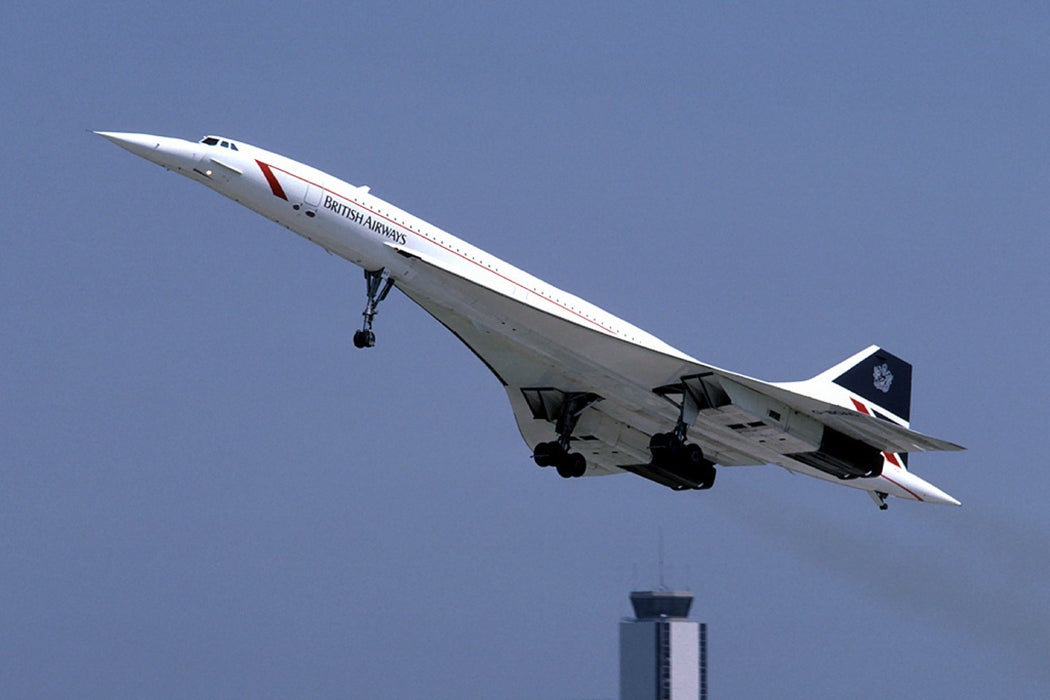On November 22nd, 1977, the first commercial Concorde flight took off, allowing passengers to cross the Atlantic Ocean in little more than three hours, about half the time it took other airplanes. Concorde, the British/French-produced supersonic airplane, was meant to be a testament to the romance of air travel: a commercial airline that could zip passengers across continents. When the first prototype took off in 1969, television ratings for the event were surpassed only by the moon landing that year. But while Concorde invigorated the imagination of European air enthusiasts, it proved to more of a symbol than a practical machine.
It was a technological marvel, to be sure. Families would visit De Gaulle Airport in Paris just to watch the famous downturned-nose airplane land. French farmers would set their clocks to its punctual arrival, marked by a supersonic boom. New Yorkers would look up from their cars on the Belt Parkway near Kennedy Airport and marvel at its elegant, bird-like landing approach.
So why has Concorde been retired for nearly fifteen years? Despite its homage to the romance of air travel, the plane was always plagued by obstacles. The plane was fragile, requiring 18 hours of maintenance for every hour it spent in the air; the time spent idle created economic burdens. It never became a vehicle for average air travelers, developing a reputation as a plaything for the wealthy, who paid nearly $10,000 per ticket. And yet despite the high cost of a ticket, the plane featured a spartan interior, with limited legroom and no space for amenities such as in-flight movies.
The project was also bogged down in politics and Anglo/French rivalries. Its very name symbolized agreement between two formerly great world powers, with the “e” added at the end to respond to French language sensitivities. The joint French/British effort was intended to thrust the Old World into the new one of space age technology. But cooperation proved difficult. International rivalry created the need for two leaders of every aspect of the project, one each to represent British and French interests.
Additionally, the project ran into opposition from the nascent environmental movement. Concorde became a symbol of noise and exhaust pollution around airports (even while its defenders noted that the plane wasn’t much different in that regard than others). Because of its environmental noise issues, the plane was limited to landings in New York, Washington, London, and Paris.
But what ultimately brought Concorde down was economics. As oil prices took off, Concorde was able to carry only a quarter of the passenger load of other planes, while using as much fuel. Concorde, noted technology writer Guillame de Syon, became more of a status symbol than a business tool. In this way, it was similar to the zeppelin, which boosted German prestige after World War I yet never was able to realize commercial success after the disastrous Hindenburg explosion.
Already on shaky legs, the plane couldn’t survive the PR nightmare of the 2000 Concorde crash in France, which killed all on board, and the dip in international travel after the 9/11 attacks. The entire enterprise was mothballed in 2003.







